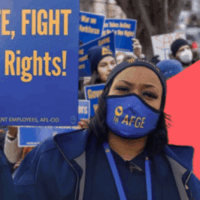Following is a statement from Debbie Berkowitz, senior fellow for worker safety and health with the National Employment Law Project:
“The National Employment Law Project applauds the U.S. Department of Labor and the National Academy of Social Insurance for convening The State Workers’ Compensation Forum. Today’s forum and a new Labor Department report highlight the deeply troubled state of the workers’ compensation system and the financial and social costs to America’s workers.
“State legislatures around the nation are engaged in a race to the bottom in their workers’ compensation laws, resulting in unfair, weak, or non-existent benefits for injured workers. As a result, employers are covering only a small percentage of the cost of workplace injuries, forcing injured workers to rely on their own savings and on taxpayer-funded programs to pay most of the costs.
“Changes in workers’ compensation over the past two decades have made it harder for injured workers to receive full benefits, which are paltry even when awarded. From the Virginia factory worker who developed carpal tunnel syndrome from repetitive work sewing children’s gloves, to Jonnie Yvonne Vasquez, who suffered neck and shoulder injuries while working at a department store, to a truck driver who tragically died from a fall from his truck, workers with legitimate and serious work injuries are being denied compensation.
“Just this Monday, the Tulsa World reported on a 28-year-old married father of three whose face was pulverized by an exploding compressor—breaking every bone in it—and who no longer can pay his bills because workers’ compensation payments are so woefully inadequate.
“An increasing number of studies confirm that only a fraction of injured workers receive any workers’ compensation benefits at all. And many low-wage workers face additional barriers to filing for compensation, including fear of retaliation for reporting an injury and requesting medical care. A landmark study by NELP and partner organizations of more than 4,000 low-wage workers in Chicago, Los Angeles, and New York found that among those workers experiencing a serious injury on the job, fewer than 1 in 10 (eight percent) filed for workers’ compensation benefits.
“The truth is that the costs of workplace injuries has shifted to the worker, their families, and the taxpayer-funded social safety net. Other glaring weaknesses in the workers’ compensation system include exclusions in many states for agricultural or domestic workers. And many workers in alternative work arrangements in very dangerous industries are also excluded from workers compensation.
“Medical bills and lost time from a work-related injury can be an enormous burden on workers and their families. Losing a family member to a work-related death can have enormous emotional and financial consequences. That is why America’s workers’ compensation system was created more than a century ago. The basic principle, often called the ‘Grand Bargain’, is that employers assume responsibly for providing insurance that pays out certain benefits (e.g., medical, rehabilitation, lost time) to workers injured on the job without regard to fault and, in return, are protected from personal injury or other liability for workplace injuries or illnesses.
“It has been more than 40 years since Congress authorized a national commission to study the inadequacies of the state-run workers’ compensation system. And it is more than a decade since the U.S. Department of Labor has monitored these state-run programs. This is a system with no federal minimum standards and absolutely no federal oversight. Clearly, more federal oversight is necessary to assure that that this system works for those most in need of assistance.
Although America’s workplaces are much safer than they ever have been, more than 4,500 workers still are killed on the job every year in America, and more than three million are seriously injured. We must do better in taking care of these workers and their families.”
###




